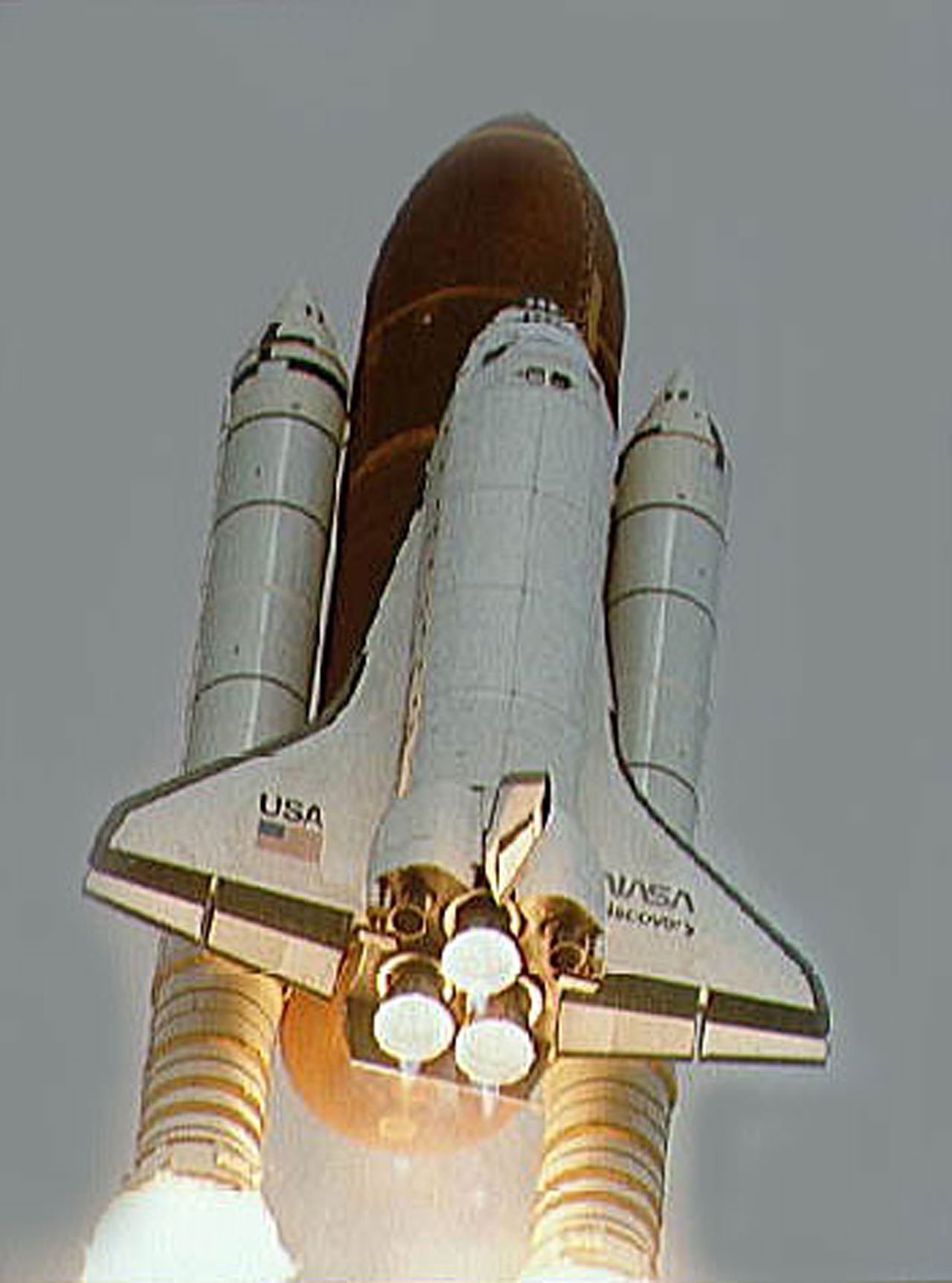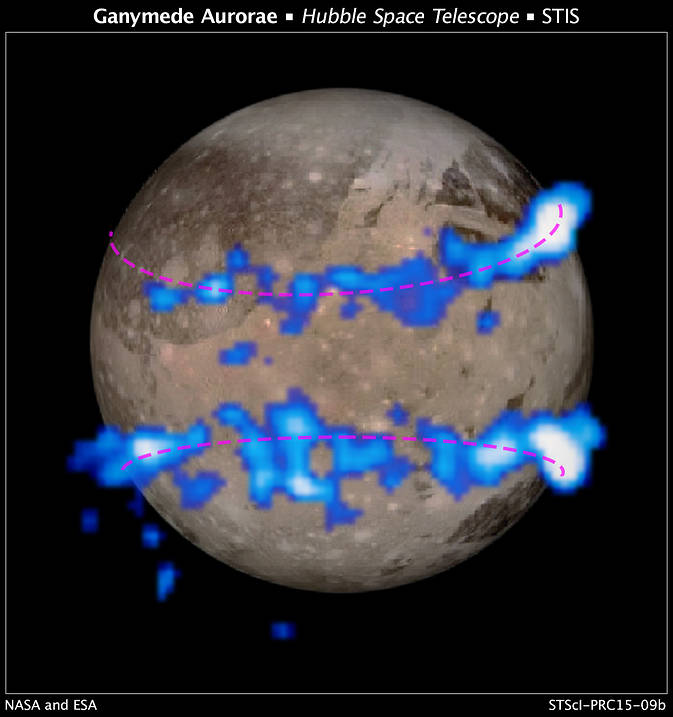Hubble Space Telescope
Birth and Construction:
Galileo, the 17th century astronomer invented the first telescope which he used to look toward the heavens. Using this new invention, astronomers found rings around Saturn, moons around Jupiter and nebulous bands of Milky Way (1). Since then, telescopes have been developed and grown in both complexity and efficiency. The best places for telescopes until mid-20th century were mountain tops away from brightly-lit cities, to minimise the effects of light pollution and atmospheric consequences like clouds, wind and rain. By the last decade of the 20th century, mankind had developed enough to reach the "ultimate" height for a telescope, one in space near Earth, which was named the Hubble Space Telescope.
In 1946, a professor and researcher at Yale University, Lyman Spitzer proposed the advantages a space telescope over a ground-based telescope (2). He explained that a space telescope will not be affected by the factors of atmospheric effects, and also that it can receive X-rays before it is blocked by our atmosphere (2). This was later put to use into starting to make Hubble Space Telescope a practical reality. The National Academic of Science pushed forward this idea with the support from NASA in mid-1960s (2). After preliminary study of challenges and phased-developments in 1971, George Low, then NASA's Administrator approved the Steering Group of the early Hubble to further develop practical tests (2). The $400 to $ 500 million project needed a lot more support at an international level in 1975 with European Space Research Organisation (ESRO) participating in producing solar panels and helping with research and development after which the cost was brought down by about half with a mirror reduction from 3 to 2.4 meters (2).
The Hubble Space Telescope was started to build with Perkin-Elmer Corporation constructing the mirror & related optics and the Lockheed Missiles and Space Company engineering the spacecraft and its support systems (2). In 1983, the Space Telescope Science Institute at the John Hopkins University in Maryland was founded which was a great support to the development of the Hubble program which was also when this space telescope was named after Edwin Powell Hubble who first proved the expansion of our Universe at a large scale (2). With such a large scale project, delays were to be expected and the assembling of the optical systems and the spacecraft was delayed until 1985 (2). The Space Shuttle Challenger lifted off from Florida with the Hubble telescope and only a minute into its flight, the vehicle exploded into a ball of smoke on January 28, 1986. Finally on April 24, 1990 NASA's Hubble Space Telescope was successfully launched on the space shuttle rightly named Discovery from the Kennedy Space Station (1).
 |
| Figure 1: Space Shuttle Discovery carrying the Hubble Space Telescope (3) |
Precision of Mirrors:
Placing a telescope in space orbit around Earth was a remarkable achievement by the human race. However as with most great inventions, it required improvements; just few weeks into operation, the images taken by Hubble were blurred which prevented it from sending spectacular images of our Universe. A study was probed into this to reveal spherical aberration in the primary mirror, caused due miscalibration of an instrument that produced the mirror which ground it a bit too flat (2). The curvature in spherical mirrors are produced to focus the light rays to the focal point to produce sharp images, but if the curvature is not calibrated precisely, the rays do not meet at one point which causes blurred images as shown in the figure below (4).
 |
| Figure 2: Spherical Aberration caused by a slightly non-spherical concave mirror (4) |
Scientists and engineers then quickly found a fix to this problem before Hubble's first scheduled servicing mission in 1993 (2). This fix was called COSTAR, which stood for Corrective Optics Space Telescope Axial Replacement comprising of a set of optics which can work to correct the spherically-aberrated mirror to produce sharp images as originally expected (2). In the December of 1993, the crew of STS-61 was intensively trained in servicing and replacing a number of the Hubble Space Telescope parts along with installation of COSTAR, upgrade of Wide Field/Planetary Camera and new solar arrays (2).
The start of 1994 was an exciting year not just astronomers who could study our Universe in more detail then ever before, but also the public who was awe-stricken by the spectacular images of the beauty in our Universe. In 1997, the crew of STS-82 installed the Near Infrared Camera and Multi-Object Spectrometer (NICMOS) and the Space Telescope Imaging Spectograph (STIS) which could give us an infrared vision into the Universe (2). This we know hugely helped in studying the objects that hide behind gas clouds and dust which are opaque to visible light. Later service & missions led to the installation of computers, advanced gyroscopes to help target precisely, sensors, new Advanced Camera for Surveys (ACS), all of which gave Hubble a wider field of view and faster gathering of images (2).
T-plus Hubble
The Hubble Space Telescope has been providing such valuable data that till date, obtaining telescope time for a particular research is highly competitive for researchers. While all this exciting observations were made, on February 1, 2003, a very tragic event occurred in which all seven astronauts aboard Columbia were killed as it disintegrated during its reentry into the Earth's atmosphere (2). Following this tragedy, investigations were made and the NASA Administrator Sean O'Keefe decided that any future shuttle missions would be to only the International Space Station (2). He also took extended efforts with the Goddard Space Flight Center before sending another servicing mission to the Hubble Space Telescope (2).
 |
| Figure 3: Comparison of the Primary mirrors in Hubble & other Space Telescopes (5) |
The Hubble Space Telescope has been a big success and a huge advancement in the field of observational astronomy. However, it will last only a few more years before it becomes too old to be serviced. This has led to the development of our next-generation of Space telescopes, which will be led by the James Webb Space Telescope (JWST of Webb) named after former NASA Administrator, James Webb which will be a large infrared telescope with a 6.5-meter primary mirror compared to the 2.4 meters in Hubble Space Telescope (6). This will be launched on an Ariane 5 rocket from French Guiana in October of 2018 (6). The primary observatory for the next decade will be JWST which will aid in developing our knowledge in the history of our Universe to the formation of extra-terrestrial planets (6).
Great Hubble moments
Oceans on Ganymede
Ganymede is the biggest and the only moon that creates its own magnetic field around it (7). Observations made by the Hubble Space Telescope show us the oscillation of auroral belts near this moon's north and south poles which astronomers believe must imply a big reservoir of salty liquid ocean below the icy crust of Ganymede (7). Reflecting on a decade back, I feel this is an awesome achievement that we are able to make observations of auroras in a moon around Jupiter without having to go that far!
 |
| Figure 4: Oscillation belt of auroral belts on Ganymede as seen by STIS in Hubble Space Telescope (7) |
Collision with Jupiter
In July 1994, the Comet Shoemaker-Levy (SL9) went on an impact collision against Jupiter (8). This spectacular event was the first of its kind observed in our solar system. The power of Hubble Space Telescope was used to capture this striking event in high-resolution and collect spectral data of Jupiter before, during and after the comet collision (8). The Hubble Space Telescope also looked for changes in Jupiter's atmosphere, evolution of the comet material, effects on Jupiter's magnetosphere and if this collision caused any development of the rings of Jupiter (8). This event, with the Hubble Space Telescope helps not us not only study the planetary dynamics and evolution, but reveals spectacular extra-terrestrial collision events in high resolution as shown in the figure below.
 |
| Figure 5: Comet SL9 collision with Jupiter captured by the Hubble Space Telescope (8) |
Millions and more
On Monday, July 4, 2011, Hubble made a landmark by making its millionth observation which was a gas giant planet larger than Jupiter at about 1000 light-years away (9). This planet was named HAT-P-7b, also known as Kepler 2b discovered by ground based telescopes (9). Even though Hubble Space Telescope did not discover this planet, it is a huge landmark in the amount of observations it has made in the 21 years (until 2011) (9). Since then, this planet has been of interest in studying the planet's temperature and the composition of its atmosphere using "high-precision" photometry by astronomers in University of Toronto (10)
References
(1) http://www.nasa.gov/mission_pages/hubble/story/#.VRrFnvnF-jk
(2) http://history.nasa.gov/hubble/
(3) http://www.spacetelescope.org/images/10063561/
(3) http://www.spacetelescope.org/images/10063561/
(4) http://farside.ph.utexas.edu/teaching/302l/lectures/node136.html
(5) http://www.asc-csa.gc.ca/eng/satellites/jwst/webb-hubble.asp
(6) http://jwst.nasa.gov/about.html
(7) http://spaceflightnow.com/2015/03/13/hubble-observations-reveal-ocean-on-ganymede/
(8) http://www2.jpl.nasa.gov/sl9/hst.html
(9) http://www.cbsnews.com/news/hubbles-yowza-moment-its-millionth-science-observation/
(10) R. Jayawardhana., et al. 2014, arXiv:1407.2245, "Changing Phases of Alien Worlds"
(5) http://www.asc-csa.gc.ca/eng/satellites/jwst/webb-hubble.asp
(6) http://jwst.nasa.gov/about.html
(7) http://spaceflightnow.com/2015/03/13/hubble-observations-reveal-ocean-on-ganymede/
(8) http://www2.jpl.nasa.gov/sl9/hst.html
(9) http://www.cbsnews.com/news/hubbles-yowza-moment-its-millionth-science-observation/
(10) R. Jayawardhana., et al. 2014, arXiv:1407.2245, "Changing Phases of Alien Worlds"












